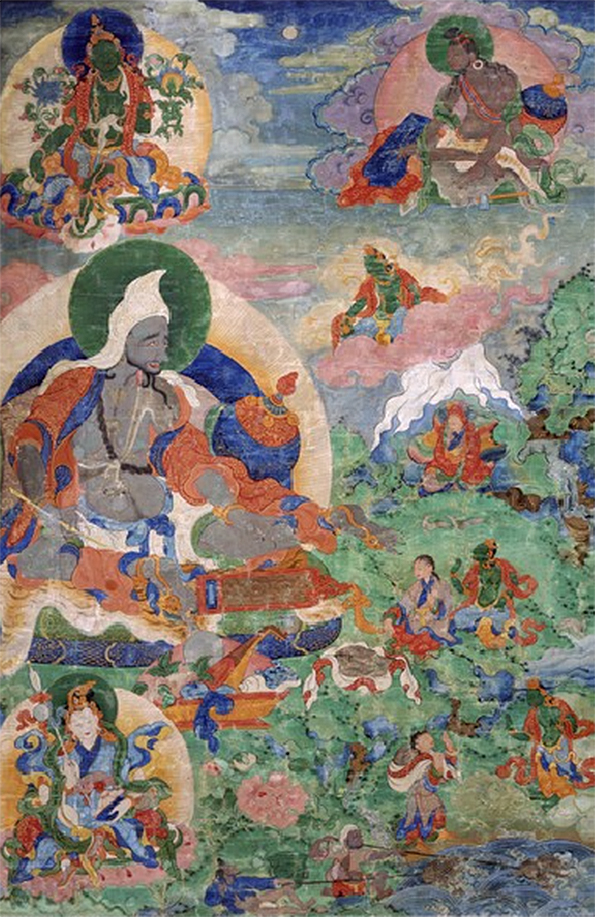Mahasidha Suryagupta

Suryagupta, the Mahasiddha :
Suryagupta, also known as Ravigupta, is one of the 84 Mahasiddhas listed by the Indian scholar Vajrasana of Bodhgaya in the 11th century.
Suryagupta was a layperson from Kashmir who was miraculously cured of leprosy by a statue of the goddess Tara.
He was well-versed in tantric practice and deeply devoted to Tara.
Miraculous Healing:
When he was afflicted by leprosy, he built himself a hut and prayed for three months to the west of the temple that housed the miraculous Tara statue.
After three months, the gate of the temple moved by itself to face his hut.
Tara spoke through the statue and asked him “what is your wish?” to which he replied “I wish to be cured of leprosy.”
At that very moment, his entire body, apart from a very small sore on his forehead, was healed of leprosy
Revelation:
Puzzled why the sore on his forehead was not healed, he asked “what was the reason for not curing the sore on my forehead?”
Tara then replied “In a previous life, you were a hunter, you killed animals and in the end set fire to an entire forest.
As a consequence, you were reborn in hell. Your current life is the last rebirth after 500 rebirths in hell.”
After saying this, she bestowed him with her sadhana and praise.
Sadhana:
She told him that when anyone prays to her and invokes her, she will help them to achieve their aims, grant their wishes, and grant them both common and supreme attainments.
After that Suryagupta composed a praise to the 21 Taras, as well as sadhanas and commentaries
He is said to have composed thirteen texts, such as the Tara mandala ritual and other Tara sadhanas that are now in the Tibetan Tengyur.
Spiritual Legacy:
Suryagupta upheld the philosophical doctrines of Nagarjuna and Asanga, and was renowned for having been a great Tara practitioner in seven of his previous lifetimes.
He taught these to his student Chandragarbha, and over time this holy lineage was passed down through the ages until today through an unbroken line of sacred masters.
Suryagupta’s principal disciple was Sarvajnamitra, who was likewise a great Tara practitioner and lineage holder.
Lineage:
Suryagupta was contemporary of the two great 7th and 8th century Indian masters Candrakirti and Candragomin.
Suryagupta is famous for having many visions of Tara and began many lineages of her practice such as the Twenty-one Taras, Vajra Tara, Seventeen Deity Tara practice, and more.
Unique Tradition:
In the Suryagupta tradition each of the Twenty-One Taras appears in her own unique iconographic form, colour and posture.
Precise textual descriptions are given for each Tara in the Suryagupta tradition.
These details include the various colours of each goddess’s lotus-throne, their facial expressions, and their specific and often obscure hand-gestures or mudras.
The Dipamkara Atisha tradition, on the other hand, portrays each Tara in the same posture.
Buddhist Viharas:
In Kashmir and Magadha he established 12 Buddhist viharas,
employing yaksha-spirits to supply the building materials, and protecting practitioners from the eight great fears.
From Nagamitra he received the empowerment of Tara, and later became renowned as one fully skilled in the Hundred and Eight Tantras of Tara
